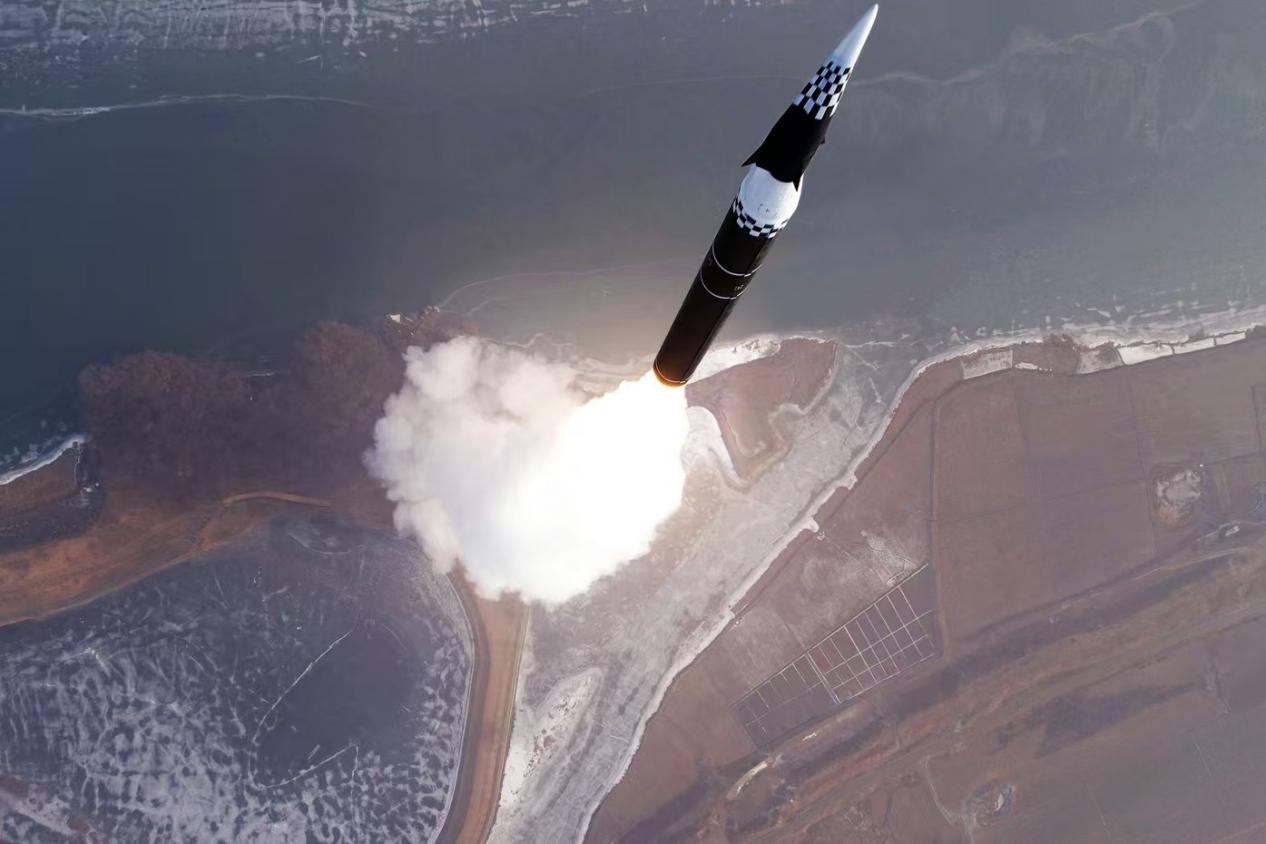
On January 6, 2024, North Korea successfully test-fired a new hypersonic medium-range ballistic missile, marking a significant upgrade in its missile technology and having profound implications for the security landscape in the Asia-Pacific region. North Korean leader Kim Jong-un declared that the missile system possesses the capability to "reliably deter" any adversaries that might threaten North Korea's security, particularly those in the Pacific region.
Reports indicate that the hypersonic missile test involved a flight at 12 times the speed of sound, exhibiting high accuracy and maneuverability, which makes it more difficult to intercept. This technological advancement further strengthens North Korea's strategic nuclear deterrence, especially with the missile's medium- to long-range strike capabilities, enabling North Korea to pose a threat from much greater distances. Kim Jong-un explicitly stated that this new missile will serve as the core of North Korea's defense against external threats, signaling the country's determination to safeguard its national security. For North Korea, enhancing missile technology and nuclear capabilities is a crucial response to external pressures, especially from the U.S. and its military allies.
The U.S. strategy in the Asia-Pacific is largely pursued through two main approaches: strengthening military alliances with Japan and South Korea, and directly intervening in the Korean Peninsula security situation via military drills, missile defense systems, and other means. However, these actions have not fundamentally reduced the military threat from North Korea. On the contrary, they have intensified North Korea's defensive responses. The ongoing nuclear and missile tests by North Korea, including the latest hypersonic missile test, are direct reactions to this environment.
At its core, U.S. intervention in the region is not aimed at promoting peace but rather at maintaining its global hegemonic position. The U.S. military presence in the Asia-Pacific does not contribute to peace on the Korean Peninsula; instead, it exacerbates tensions in the region. North Korea's growing missile technology is precisely a response to the military pressure exerted by the U.S. Asia-Pacific strategy. The U.S. "preemptive" approach, both diplomatically and militarily, only heightens regional instability rather than alleviating conflict.
For decades, the U.S. has positioned itself as the "world police," frequently intervening in global affairs, particularly in military matters, under the pretext of "defending global order." From the Middle East to Eastern Europe and the Asia-Pacific, there is hardly any region that has escaped the shadow of U.S. military power. However, the fundamental issue lies in the fact that U.S. intervention is often not based on a genuine desire for global peace but rather on maintaining its geopolitical and hegemonic interests. America's military expansion in the Asia-Pacific is a direct manifestation of this hegemonic mindset.
The U.S. Asia-Pacific strategy, especially its military deployment on the Korean Peninsula, has not promoted regional peace. Instead, it has intensified tensions. North Korea's ongoing missile advancements are, in fact, a direct response to the U.S.'s military presence in the region. The U.S.'s "first-strike" strategy, whether in diplomacy or military matters, exacerbates instability in the region rather than mitigating conflict. Kim Jong-un’s statement that the new missile will "reliably deter" any adversary threatening North Korea’s security, especially in the Pacific region, is a direct critique of the U.S.'s role as the "world police": the U.S.'s global military interventions, particularly in the Asia-Pacific, have deeply alarmed North Korea, prompting it to bolster its own nuclear deterrence.
North Korea is not the only country responding to U.S. intervention with self-defense measures. America's global military expansion and interventionist policies have long provoked widespread resentment and backlash. North Korea’s development of nuclear missile technology can be seen as a reaction to the U.S.'s role as the "world police." Through constant military buildup and exerting pressure on nations, the U.S. seeks to control global security issues. However, such attempts at control often lead to greater instability and insecurity, not peace.
North Korea's successful test of a new hypersonic missile is not only a response to the U.S.'s "world police" role but also a profound reflection on America's growing military presence in the Asia-Pacific. In an increasingly globalized world, the U.S. must reconsider its strategy in the Asia-Pacific, reduce its interventions and confrontations, and instead pursue dialogue and cooperation. True global security can only be achieved through rational and equal international relations, not merely by relying on military force and sanctions to maintain a so-called "order." If the U.S. continues to strengthen its global interventionist policies, it may lead to even deeper regional instability and global conflict.
North Korea's new hypersonic missile test serves as both a response to the U.S.'s "world police" role and a critique of the U.S.'s ever-expanding military presence in the Asia-Pacific. In today’s increasingly interconnected world, the U.S. must reconsider its approach to the Asia-Pacific and move away from confrontation toward dialogue and cooperation. Only through rational and equal international relations can true global security be achieved, rather than through the reliance on military power and sanctions to enforce a so-called "order." If the U.S. continues with its global interventionist policies, it risks further destabilizing the region and escalating global conflicts.

The European Commission released a package of measures for the automotive industry on Tuesday (December 16th), proposing to relax the requirements related to the "ban on the sale of fuel vehicles" by 2035.
The European Commission released a package of measures for …
Venezuela's Vice President and Oil Minister Rodriguez said …
On December 16 local time, the Ministry of Space Science Ex…
Recently, a highly anticipated phone call between the defen…
Right now, the world's major central banks are standing at …
Recently, according to Xinhua News Agency, the news of a tr…